An artist’s studio visit and interview with Greg Lago.
“Like a bird on the wire
Like a drunk in a midnight choir
I have tried in my way to be free”
Lyrics & music by Leonard Cohen, circa 1968.
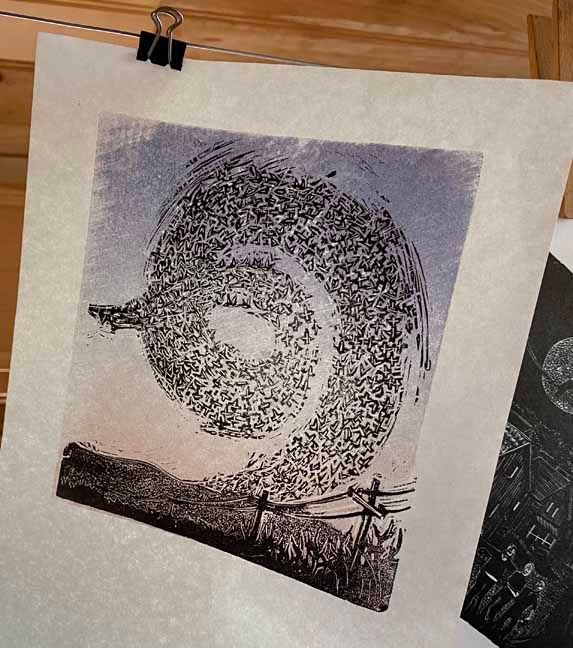
This summer, Clayton, New York’s Thousand Islands Arts Center will feature Greg Lago’s work in a solo show called “Bird on the Wire”, August 25 through October 22. The show will include some 60 wood block prints and dozens of sculptures and oil paintings.
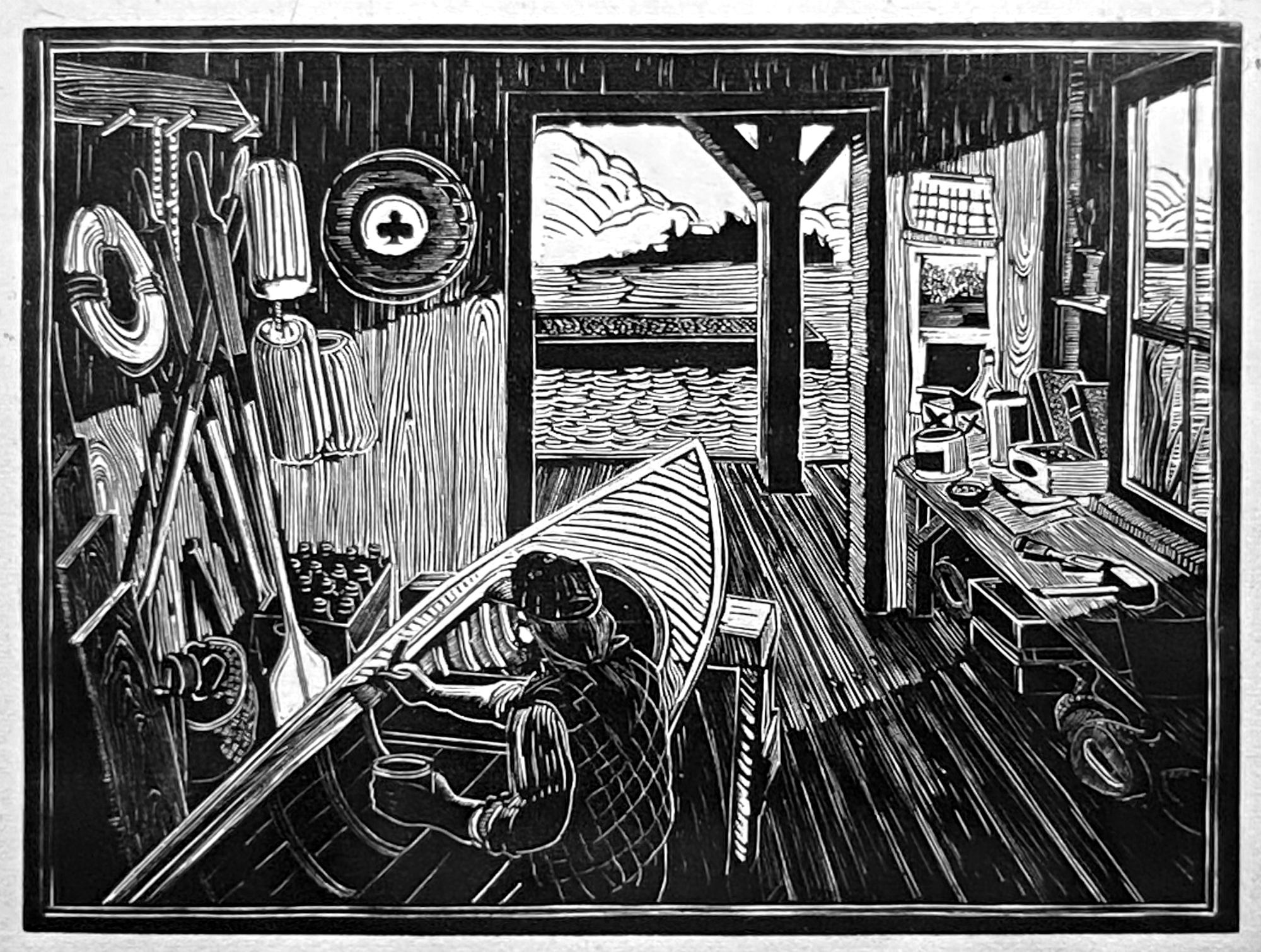
Greg Lago’s stark graphics, carved wood figures, and colorful paintings tell stories rich in local folklore, mystery, and humor. In almost all his work you can see the River, the North Country, and universal themes of the human condition. The work in this show spans some 50 years, but make no mistake, Greg is not done making art.
I joined Greg and his wife Karen for a visit on a rainy afternoon, in his studio home outside of Clayton. The house, gardens, and studios are visually interesting from every angle, and Greg’s artistic sensibilities are impressed upon almost everything you see. I asked him when he built the house.

“In 1977, the day we married in Bronxville, NY, a well driller began putting in the well. By January 1978, we had built and moved into our house. Plato said every man should build his own home. Years ago, all homes were owner built. My great grandfather built the home in Carthage that my grandparents lived in. My father built the house that I lived in as a kid. I helped my younger daughter, Ruth, build her house.”
Many River folk will remember “Winged Bull Studio” in Clayton, where Greg ran a gallery and frame shop for many years. It was often busy and crowded around his printing press. I always wondered how he could produce as much work as he did and juggle the ever-changing cast of characters, including myself, who stopped by to visit.

“226 James St. was great fun,” Greg told me, “A clubhouse for artists of all types. Huck Balcolm once said it’s the only place you can go in Clayton, hang out and not spend any money. Karen and my daughter, Ulea, ran the garden restaurant, Teaism, out of the back, and many a bottle was drunk in the shank of the afternoon. Sun, musicians, artists, collectors, and the curious were there. You can go back to the place, but you can’t go back to the time. People still stop by out here on House Road, and I’m usually there. I love to chat but not for long. Time feels too short. In the shop, you’re like a butterfly on a pin. Kind of stuck, wanting to fly, but you can’t.”
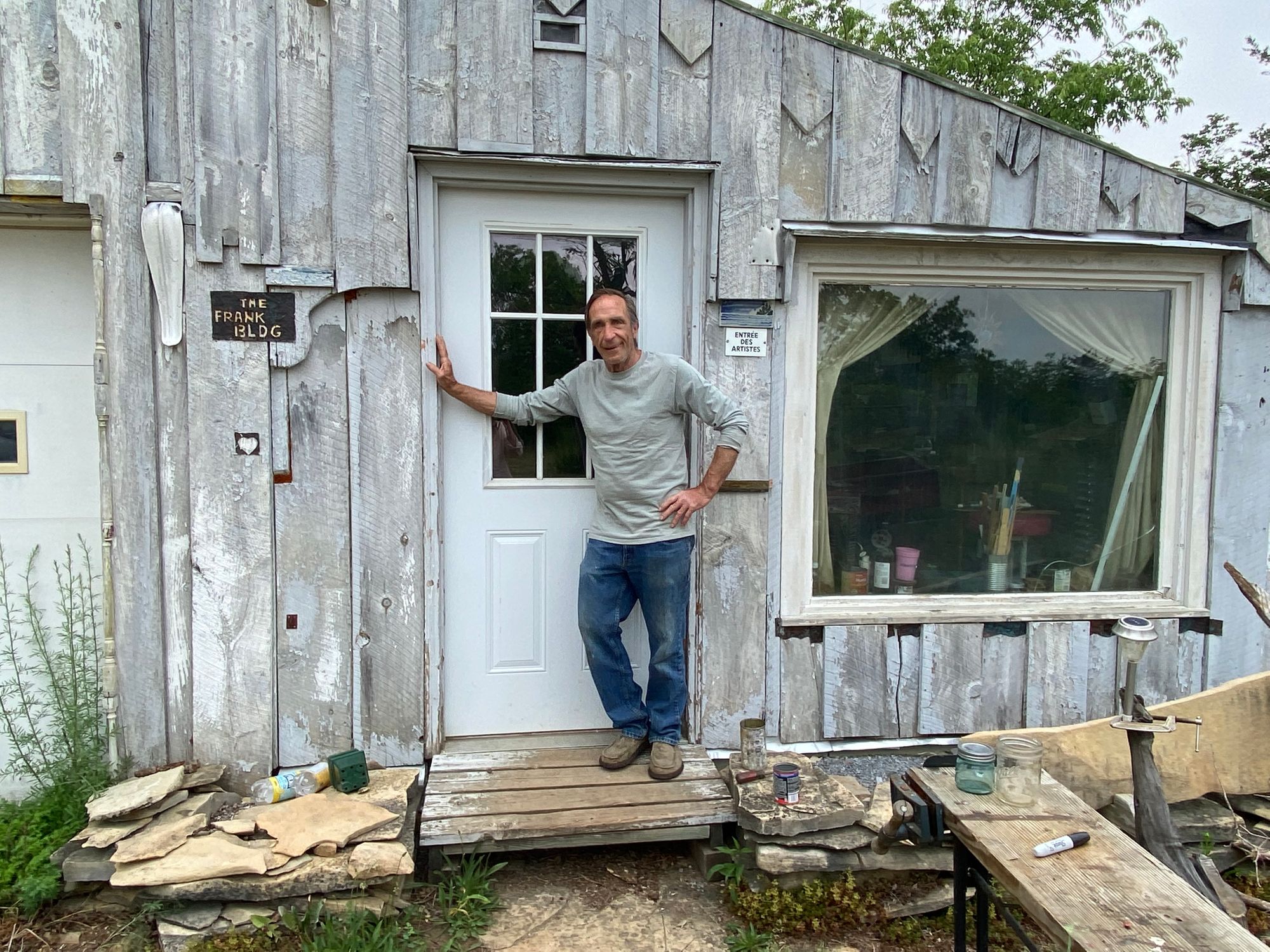
“How has working in a more private space changed your process?” I asked, and Greg gave his characteristic smile and laugh.
“Not much. I get up at 5:30 or 6 o’clockAM, and work ‘til 8 PM. In between, I eat three meals a day, spend time looking for my tools, thinking, and usually working on several different pieces in the course of a day. I have become more productive and less concerned about time on task.
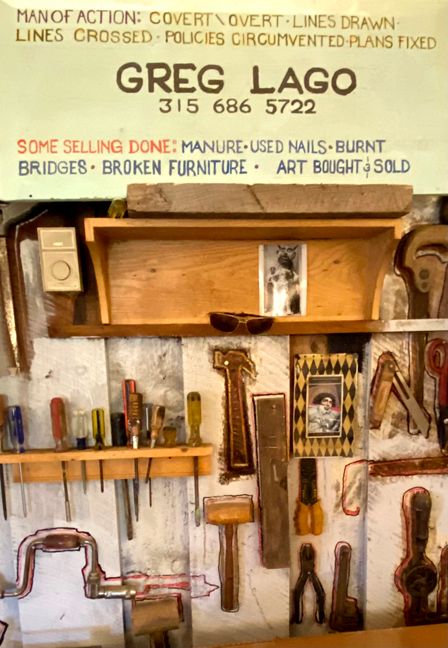
We spoke in his studio where his printing press is set up in one room, a woodstove in a corner in another, and I asked him about his paintings and he offered to show me yet another studio space. I didn’t know there was one and said yes. Above the entrance of the house was what I always assumed, was a little bedroom. Greg led me to a steep set of stairs, and I climbed up to find a real artist garret.


A painting of a River scene in the style of pointillism was on the easel.
“This is down near the McNally’s, that’s their boathouse.” Greg showed me with a brush how he dots on tiny specs of paint.
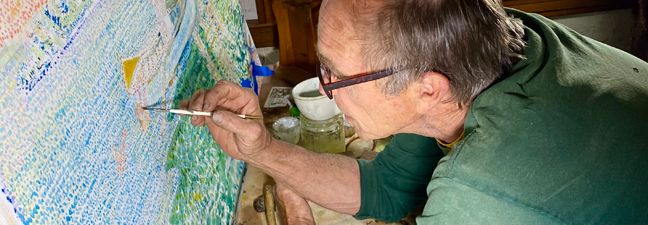
”So it makes sense to me that you would paint as a pointillist, given your graphic arts background,” I said.
“Yeah, it does, I started out drawing,” Greg agreed.
“Stippling?” I asked.
“Yes. When you draw with dots, it’s called stippling, and when you paint it’s called pointillism.”
“It’s almost digital, the pixels and all.”
“The more I get into art, I see more connections between art and science. Seurat used the science of color relationships, how the human eye blends colors that are next to each other. I mean, they were just learning about the rods and cones in the human eye at that time. Seurat would say you see the outline first. Getting back to the original hunters who would take the visual information in an outline form and then the detail gets filled in.”
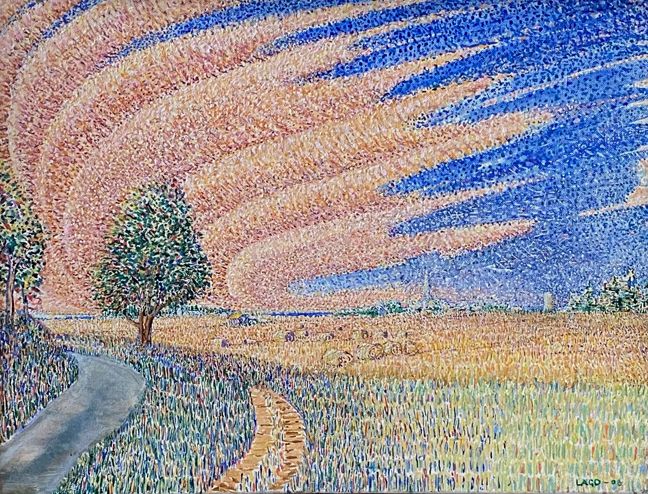
“You’ve talked about subtractive and additive processes in your work,” I said, and Greg nodded.
“When you carve, one piece is removed, it can not be replaced. You can’t erase or start over. Forethought and planning are important. In painting, you build layers of paint, mistakes can be painted over. Ideas evolve and change along the way.”
“Of the several modes of working, prints, paintings, and sculpture, what brings the most pleasure in the making?” I asked.
“I have always loved the forest,” Greg answered. “I love working with wood, it’s versatile, beautiful, resilient. Block prints seem to be almost evangelical in nature. Used for book arts, engravings, the end grain block gives stark contrast. Good detail and the ability to make multiple images. I am almost always pleased by the completed work, but never quite satisfied.”
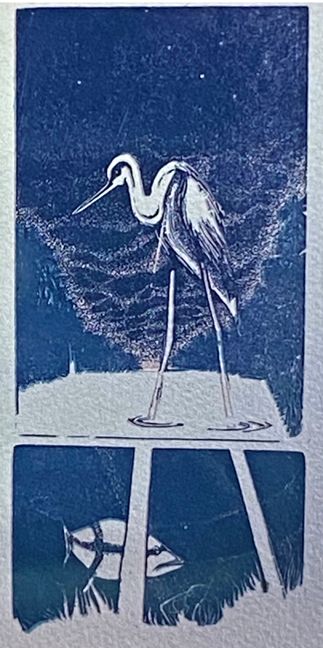
I asked Greg how the upcoming show in August was going to be different from the many he in which he’d participated in the past.
“This show includes work in my favorite mediums,” he said. “Over a fair amount of time – 50 years – most of the exhibitions I’ve taken part in are often in towns and cities a long way from here, often sharing space with many artists. This exhibition is for Clayton, for all the friends I’ve made here, for all the artists who work here on the St. Lawrence, and who give inspiration to each other.”

“So, one of the things in this show that I want to put out there is the idea of Clayton being a nurturing place for artists.
I had this idea of the St. Lawrence River school of art as opposed to the Hudson River school of art. So it’s kind of about affluence, you know the boats, the lighthouses, but also nature and being on the border to Canada. Clayton has embraced art now. We’re 21st-century consumers, but still love the tradition of being on the land.
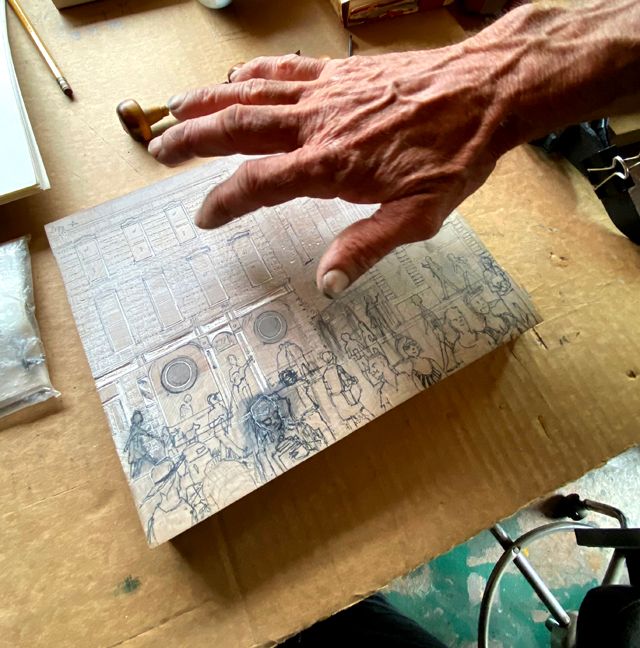
“Yeah, communities seem to strive to be ‘artistic’,” I commented, and Greg nodded.
“I remember years ago, going to a town meeting or some zoning board meeting or something. And I told them, you know, the fishing may not be around forever. But artists are going to become like fishermen. Art’s going to replace fishing for a business in this town. And they all looked at me like I was crazy. And I feel like a lot of people made that happen, and it has. St Lawrence River School of Art is also about kindness. There is a sweetness, a summer sweetness to it.”
I have been lucky enough to have an ongoing conversation about art, the artistic process, and a healthy dollop of “as-the-prop-turns” River gossip with Greg since the late 1990’s. That he chose Leonard Cohen’s anthem of individuality, “Bird on the Wire” for a title is fitting.

[Photographs by the author, Sarah Ellen Smith ©2021]
By Sarah Ellen Smith
Sarah Ellen Smith began shooting photos, drawing, and painting what she saw along the shores of the St Lawrence River and Lake Ontario, during her childhood. In the years since, she has traveled the world gathering images, observing art, and art makers. In 2010, Sarah Ellen returned to be a year-round River resident. Until recently, she and John Arnot ran a gallery of their individual and collaborative work at St. Lawrence Pottery.
Posted in: Volume 16, Issue 7, July 2021, Artists, News article
Please click here if you are unable to post your comment.
